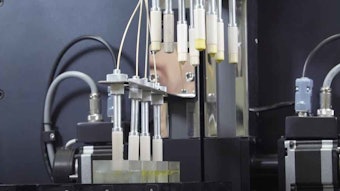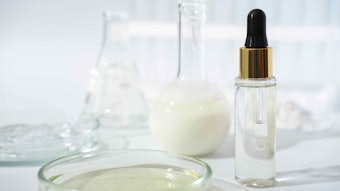Psychodermatology is the study of how the mind and body interact in relation to the onset and progression of various skin disorders. It also examines psychoneuroimmunology (PNI)—the way one’s mental state affects the immune system and hormones, in turn affecting the skin. According to the American Academy of Family Physicians,1 psychodermatologic disorders can include skin conditions such as eczema or psoriasis that are worsened by stress.
For nearly 15 years, psychologist Linda Papadopoulos, PhD, has studied this specialty. Her interest in skin care led to an examination of current skin care offerings on the market.
“I didn’t really see anything that represented the psychological aspects of skin care,” said Papadopoulos. This observed gap in the market led her to Bruce Green, a 25-year veteran of skin and hair care formulation chemistry, who helped her create a product line.
Almost four years later, Psy-Derma skin care was launched. “The psychosomatic [mind and body] aspect of the line took longer to examine than originally expected,” noted Green, who added, “It became an issue of utilizing the ingredients to tell the correct story.” The correct marketing story, that is, such as improving mood or cognitive ability topically.
Mood-altering Ingredients
To tell the correct story, Green incorporated natural nootropics, substances that enhance cognition and memory, in the product range. “[These] compounds affect the way you feel and the way your skin looks,” said Papadopoulos, “and the two have a great effect on one another.”
Papadopoulos continued, “Nootropics relieve stress and promote endorphins while ... acting on those receptors.” Idebenone, for instance, has been shown to protect against cell damage from oxidative stress in a variety of biochemical, cell biological and in vivo methods, including its ability to suppress sunburn cell formation in living skin.2
“Idebenone was important to include [in the product range] because it is naturally derived,” said Papadopoulos, who added that the material promotes information transfer across the corpus callosum, increases nerve growth factor, and boosts production of the neurotransmitters serotonin and dopamine, which produce a calming sensation.
In addition to nootropics, scent was an important consideration. “Aromatherapy played a large role in formulating the products,” said Green, noting that bergamot, citrus and hibiscus essential oils were used in the range. Bergamot was chosen for its reported “uplifting and refreshing” properties, and chamomile for its soothing effects.
Holistic Health
Along with mood-enhancing ingredients, a material to assist skin’s innate defenses was included in the range. Bio-inulin is a prebiotic that, according to Papadopoulos, was designed to, “assist in the protection of skin’s natural defense mechanisms.”
Prebiotics take a holistic approach by targeting the microbiota already present within an ecosystem, acting as a food for the target microbes that are seen as beneficial.3
Panel Testing
Beyond skin benefits, once mood and immunity were added to the range, consumer testing was carried out, primarily via blind studies. Hundreds of product samples and placebos were sent to test subjects, along with questionnaires. These questionnaires focused on observed results; psychological aspects were considered secondary so as not to lead the subjects’ opinions and cause the placebo effect.
“We know that if a person thinks a product produces results, they will see results,” explained Green. “We asked questions like: ‘What do you think?’ ‘How did you like it?’ and, ‘Did it make you feel different about yourself?’” The formulation process continued as the testing narrowed down formula variations to eventually reach the final products.
Thinking Skin Healthy Papadopoulos noted that while basic skin care is important to achieving healthy skin, psychodermatology is about more than just topical treatments, saying “habituation and positive behavioral changes are important in order to strengthen the link between the central nervous system and the skin.”
References
1. www.aafp.org/afp/20011201/1873.html (Accessed Feb 16, 2009)
2. www3.interscience.wiley.com/journa/ 118740620/abstract?CRETRY=1&SRETRY=0 (Accessed Feb 16, 2009)
3. www.isapp.net/docs/Consumer_Guidelines_prebiotic.pdf (Accessed Feb 16, 2009)












